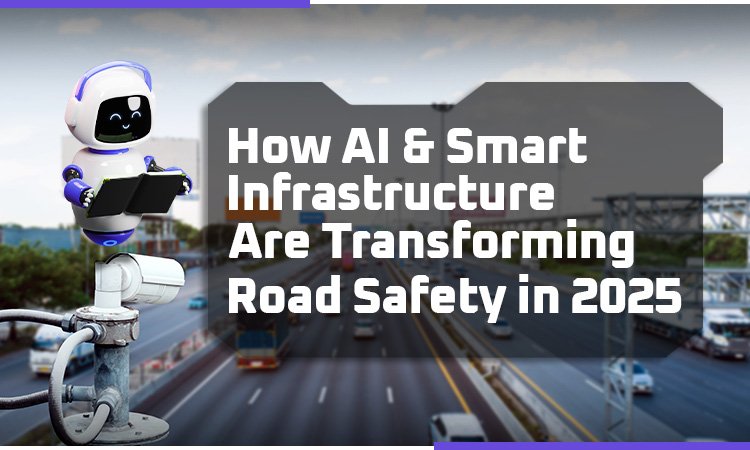
How AI and Smart Infrastructure Are Transforming Road Safety in 2025
Road safety has long been a global challenge, with 1.19 million lives lost annually in traffic accidents. However, 2025 marks a turning point as AI and smart infrastructure revolutionize how we predict, prevent, and mitigate accidents. From satellite-powered traffic monitoring to AI-driven collision avoidance systems, cutting-edge technologies are making roads safer, smarter, and more efficient than ever before.
1. AI-Powered Traffic Management: Predicting and Preventing Accidents
Traditional traffic systems rely on reactive measures—CCTV cameras, speed traps, and manual patrols—but AI enables proactive safety. Cities like London and Dubai now use AI to:
- Optimize traffic signals in real-time, reducing congestion by analyzing live data from cameras and GPS.
- Predict accident hotspots using historical crash data and weather patterns, allowing authorities to deploy preventive measures.
- Detect wrong-way drivers and speeding violations automatically, issuing alerts to law enforcement.
For example, Lisbon’s AI-driven traffic system reduced travel times by 20-70% and cut stops at red lights by 30%. Similarly, AI-powered intersections like Florida’s PREDISS system predict collisions before they happen by tracking vehicle trajectories and issuing warnings.
2. Smart Sensors and IoT: The Nervous System of Safe Roads
Modern roads are embedded with smart sensors that continuously monitor conditions, providing real-time data to prevent accidents:
- Pothole and ice detection: AI analyzes vibrations and temperature data to alert drivers and maintenance crews before hazards cause crashes.
- Blind-spot and pedestrian detection: Radar and LiDAR sensors identify cyclists, pedestrians, and obstacles, triggering automatic braking if needed.
- Vehicle-to-Everything (V2X) communication: Cars “talk” to traffic lights and other vehicles, adjusting speed to avoid collisions.
In Mönchengladbach, Germany, AI extends green lights for slower pedestrians, while in Tallahassee, Florida, sensors predict risky driver behavior at intersections.
3. Satellite Technology: A Bird’s-Eye View for Safer Roads
Satellites are now guardians of road safety, offering real-time hazard detection from space:
- Monitoring traffic congestion and rerouting vehicles dynamically.
- Identifying landslides, floods, and damaged roads before they become deadly.
- Enhancing emergency response by pinpointing accident locations in remote areas.
The European Space Agency’s Valerann project uses satellite data to improve nationwide road safety, particularly in rural areas where accidents are 9 times deadlier than on highways.
4. Autonomous and Connected Vehicles: Reducing Human Error
Since human error accounts for 94% of crashes, self-driving cars and AI-powered driving systems play a crucial role in improving road safety.
- Adaptive cruise control maintains safe distances, reducing rear-end collisions.
- Lane-keeping assist prevents drifting, while driver monitoring AI detects drowsiness.
- Fully autonomous fleets (still in testing) promise zero-fatality roads by eliminating human error.
5. The Future: AI-Driven Smart Cities
By 2030, the UN aims to halve road deaths, and AI is leading the charge:
- Predictive analytics will forecast traffic jams before they form.
- Self-healing roads with embedded sensors will automatically schedule repairs.
- 5G-enabled smart highways will allow seamless communication between vehicles and infrastructure.
Conclusion: A Safer Tomorrow Starts Today
AI and smart infrastructure aren’t just ideas of the future—they’re already making our roads safer today. From satellite surveillance to autonomous emergency braking, 2025 is the year technology finally outpaces human error. As cities worldwide adopt these innovations, we move closer to Vision Zero: a future with no road fatalities.



